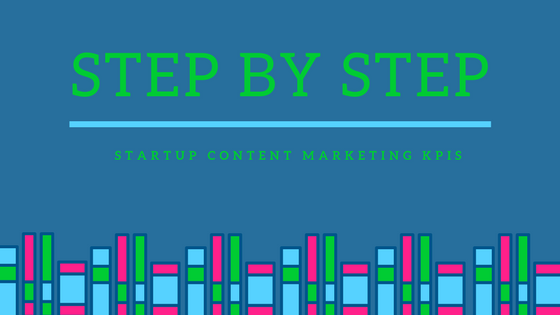There’s no such thing as a cookie-cutter approach when it comes to the goals for your content marketing. You must decide which goals come into play and how they interact with each other.
Possible goals could be:
- Attracting new prospects – lead generation
- Raising awareness to a certain topic in your ecosystem
- Market education
- Communicating a new message or offer to clients and getting them to buy in
- Gaining the attention of non active clients and renewing your relationship with them
- Increasing your company’s reputation and authority in your field
- Engaging and conducting a conversation with your audience
Once you’ve set up the goals for your content marketing, the next step is to make them measurable by figuring out the right KPIs.
One of the most challenging aspects of your content marketing success will be figuring out your KPIs. They build the foundation of your content marketing and can set you on the right track for the long run. And while each type of content and each goal will have different KPIs, you will see some overlap. Content KPIs will also help you understand the cost of each marketing activity, thus improving your budget plan and marketing ROI.
To get you started, we’ve outlined a few of the most common content KPIs:
- Visitors: refers to website visitors, social media views, readers, etc.
- Comments: can be found on social media, within blogs, and below the videos.
- Shares: can refer to social media shares on Facebook and LinkedIn, retweets on Twitter, reposting of blogs, and even forwarding of emails.
- Likes: refer to social media likes, follows or favorites.
- Signups: can refer to blog subscribers, newsletter signups, channel subscribers/followers, etc.
- Conversions: can refer to any action your audience will undertake that is in line with your marketing campaign. Desired outcomes include: leads, downloads, sales etc.
KPIs and the B2B Marketing Funnel
In order to determine the right KPIs for each type of content, you first need to understand your startup’s marketing funnel. For many startups, increasing brand awareness and developing the company’s reputation comes first, whereas tracking leads and downloads comes at a later stage, so your KPIs should always start at the top.
For example, when it comes to a blog, your first measurement of success could be the number of visitors that stay and read the content. Later, you can break down your visitors by different channels to see where they came from, thus learning which distribution channel is the most effective. Second, you’ll want to measure the number of comments and the conversion rate of subscribers from reading the blog – for example downloads (if applicable), quality leads, open opportunities, and sales.
The bottom line is that you’ll have to set up different KPIs for each of your goals, that will ultimately determine your success.

Planning your Content Marketing
Successful content marketing gets the right information to the right person, using the right channel, at the right time. If you do it right, it can work wonders for your startup. Therefore, it’s important to match your content matter and content type to your goals and your audience.
There are dozens of types of content, and each one offers your marketing team something different. For example, Facebook & LinkedIn don’t yield the same results and neither will your blog or a newsletter. A comprehensive content plan will include more than one channel and matching content to go with it.
The most popular digital content types are:
- Blogs
- Social Media posts
- Newsletters
- Email marketing
- Videos
- Content offers
- Infographics
Each type of content listed above can and should be used to achieve different goals. For example, blogs are best at setting your business up as a thought leader, but they can also be used to gain new prospects as blog subscribers.
A newsletter would be most effective at announcing product/service updates, or company activities such as presenting at a conference, thus deepening your relationship with existing customers. A newsletter can also be effectively used to start a relationship with a new lead.
Email marketing (or in its “new” name lead nurturing) is most effective for pushing your prospects further down the funnel, better to be based on their past activities. For example, a lead who downloaded a whitepaper, will now be invited to a webinar.
Infographics are a great method to clearly summarize complex information and make it more palatable to your audience. They’re also very good for presenting information on social media and drive share and comments.

To visualize your content even further, go for videos. They clearly present information and save your audience the need to read the same content. The popularity of video continues to rise and is predicted to become 74% of internet traffic in 2017.
So, how do you match the right content to your goal? At times it’ll come down to trial and error, but if you remember to backtrack to your KPIs, you’ll never get lost.
Like most marketing activities, the best practices for content are to thoroughly plan ahead, constantly monitor and change based on data, and of course, target the right persona. You want to be able to provide your readers with information they need and present it to them where they are comfortable receiving it.
Once you understand your target audience you’ll be able to better determine what content to create. Combining these insights with your startup’s business strategy will enable you to define your inbound marketing content campaigns and goals.



.jpg?width=352&name=19%20(1).jpg)

